Tall indoor plants add depth, height and texture to any room
Our editors and experts handpick every product we feature. We may earn a commission from your purchases.Learn more.
Tall indoor plants add depth, height and texture to any room
Our editors and experts handpick every product we feature. We may earn a commission from your purchases.Learn more.
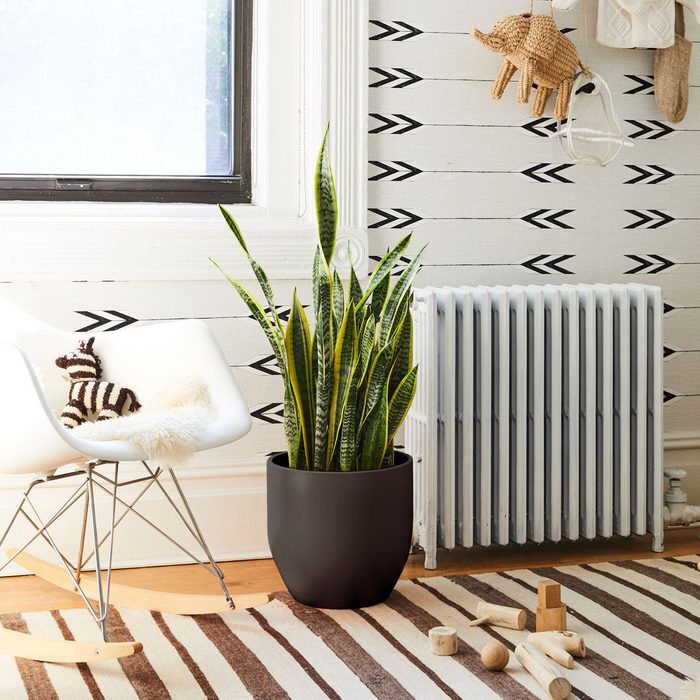
Pros:
Cons:
Size: 8 inches to 8 feet
If you’re nervous about owning houseplants because you don’t think you have a green thumb, look no further than the snake plant. “Snake plants are incredibly easy to take care of [and] nearly impossible to kill. And most importantly, they make a beautiful addition to any home,” says Pangborn. With upright, sword-shaped leaves, these hardy tall houseplants thrive in a variety of conditions. “They tolerate any light level, from full sun to low light, and require infrequent watering,” she says. Just be sure you’re familiar with snake plant care before you buy to ensure this curious plant thrives in your home.
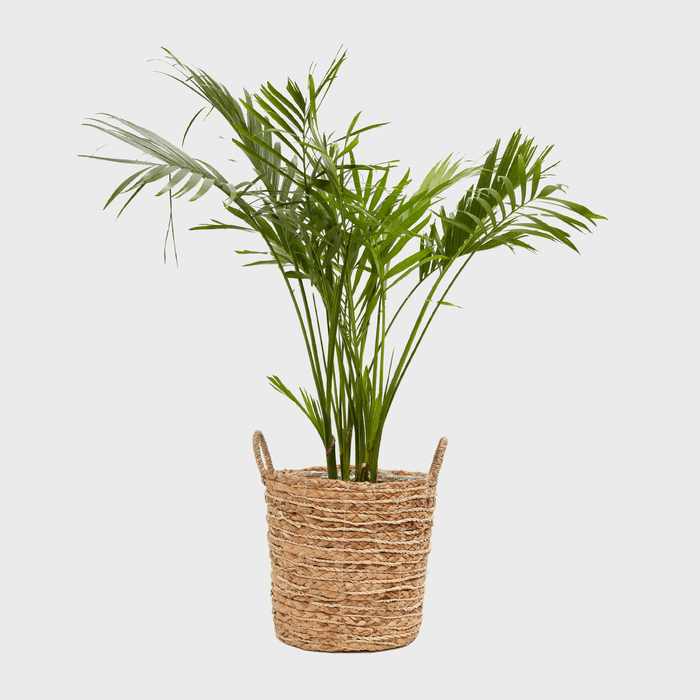
Pros:
Cons:
Size: 10 to 12 feet
New to plant parenthood and want a hardy specimen as you learn the ropes? Consider the parlor palm. “Most palms grow in and prefer full-sun conditions outdoors in their native habitat,” says Hancock. “Parlor Palm is one of the best palms to grow indoors because it has lower light needs than most of its cousins.” Sure, these tall indoor plants prefer bright light, but they’ll manage in low-light conditions when grown indoors. And plant watering is simple with a parlor palm: You’ll know when to give yours a drink when the topsoil is halfway dry.
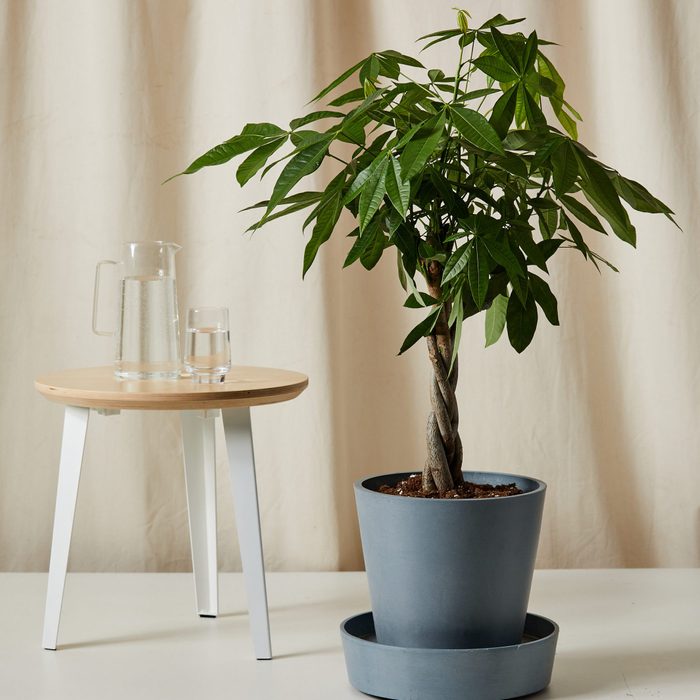
Pros:
Cons:
Size: 6 to 8 feet
“The money tree is a low-maintenance indoor foliage plant, popular due to its braided trunk, glossy green leaves and ability to give your home a tropical feel,” says Pangborn. They’re a top choice for decorating with plants according to feng shui, but pretty much anyone who wants to brighten their space with an easy-to-care-for tall houseplant will want to consider a money tree. “It can also adapt to and thrive in a variety of light environments, ranging from low to bright indirect light, and it even tolerates fluorescent lights,” Pangborn adds.
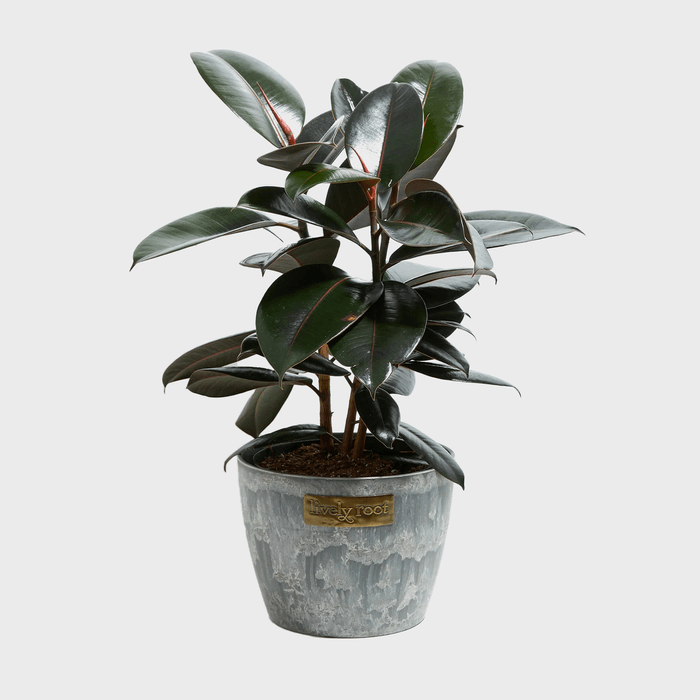
Pros:
Cons:
Size: 1 to 10 feet
Another easy plant for newbies is the Burgundy rubber tree. “It is a strong and sturdy plant that’s more tolerant of neglect than other ficus plants, making it great for beginners,” says Pangborn. “The Burgundy rubber tree has thick, glossy leaves that range in color from a rich burgundy red to almost black, making for a dramatic contrast against light-color decor.” Wondering where to put this tall houseplant? “It does best in a spot with very bright indirect sunlight,” she says. As for care, consider making your own compost to use as a natural fertilizer for your tall indoor plants.
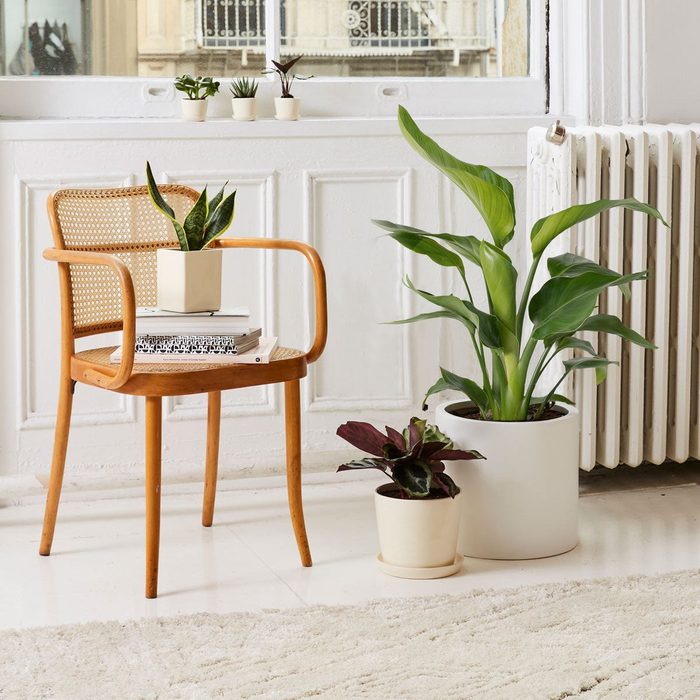
Pros:
Cons:
Size: 3 to 6 feet
“Known as the ‘queen of indoor plants,’ the bird-of-paradise has glossy, banana plant–like leaves that flare out for a tropical look,” says Pangborn. This indoor flowering plant gets its name from its unique orange blooms, which look like birds mid-flight. This is a tropical plant, so it’s no surprise that it prefers a warm environment with plenty of sunlight. “The bird-of-paradise thrives in bright light and a humid environment,” says Pangborn.
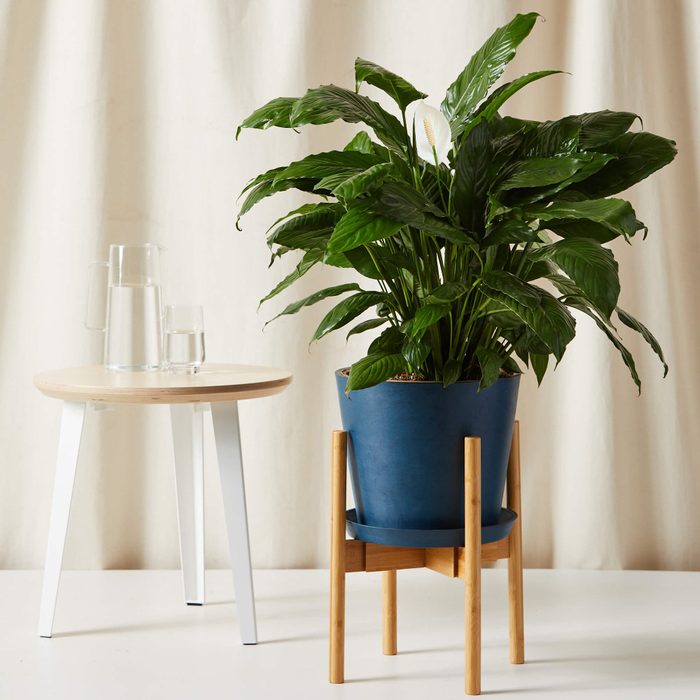
Pros:
Cons:
Size: 1 to 5 feet
Peace lilies are often identified by their white, flag-like flowers. They’re a great option for anyone who wants to invest in gorgeous air-purifying plants or whose living space is lacking light. “It is one of the very few houseplants that can bloom in lower light,” says Raffaele Di Lallo, author of Houseplant Warrior and founder of the plant-care blog Ohio Tropics. “Every home should have at least one!” When it comes to watering this air-cleaning plant, Steinkopf suggests keeping the soil moist to keep your peace lily healthy.
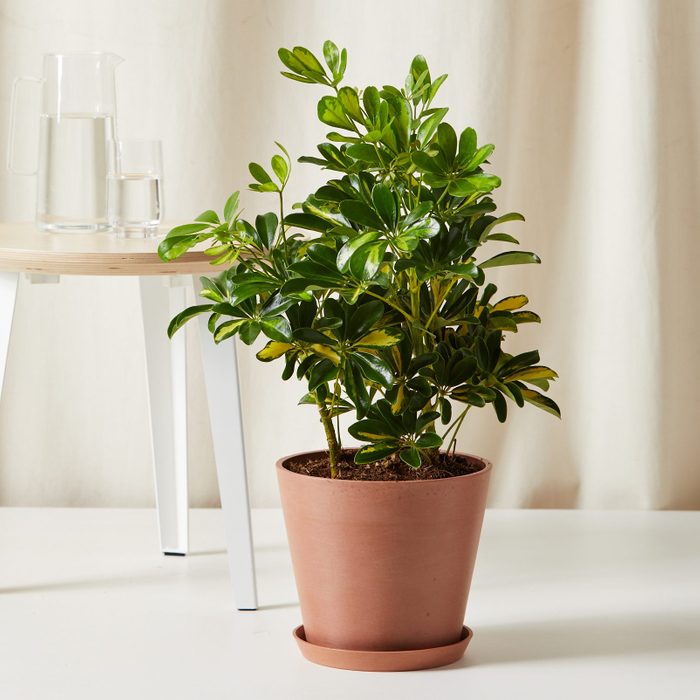
Pros:
Cons:
Size: 3 to 4 feet
“With its eye-catching yellow-and-green leaves and braided trunk, the variegated Schefflera is a must-have in your home, especially for new plant owners,” says Pangborn. Easy to grow with small, bright-green leaves, this plant often goes by the name of “parasol plant” or “umbrella tree” for its leaves’ shape. If you’re new to owning houseplants or forget to water your plants, this is a great place to start—the plant is very forgiving. “Water your variegated Schefflera at least a few times a month, and you’ll have a beautiful-looking plant to brighten up any corner of your home,” Pangborn says. Just pay attention when tending to this gorgeous plant; brown tips on the leaves of Scheffleras and other tall indoor plants are a sign that something’s wrong.
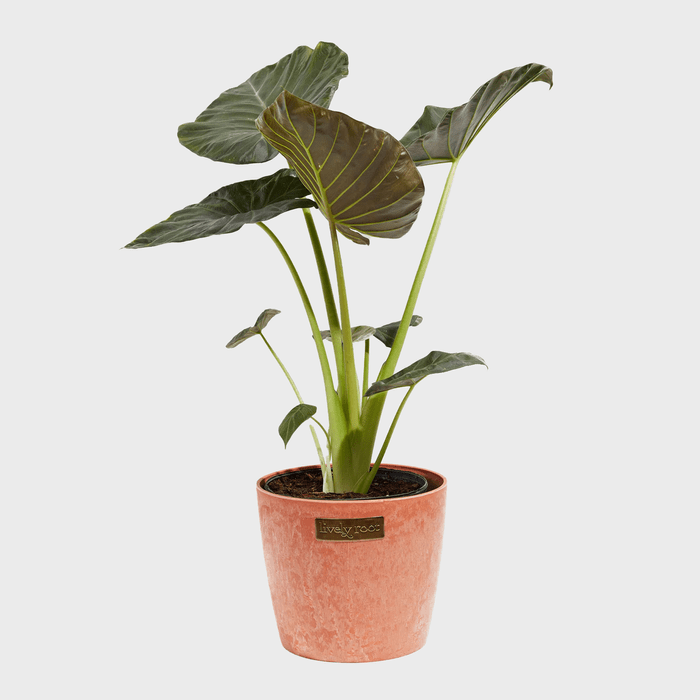
Pros:
Cons:
Size: 4 to 5 feet
Looking for a statement piece to add to your home or a tall indoor plant that exudes a sense of calm? Try the elephant’s ear, which has thick, oval-shaped leaves and pronounced veins. “Its huge leaves definitely create a sense of presence that I find really calming, especially varieties like Regal Shields, which have bronzy-purple foliage,” says Hancock. But you’ll want to make sure you have a space in your home with the right conditions for this plant to thrive. Hancock explains that these plants need “lots of light and above-average relative humidity levels.”
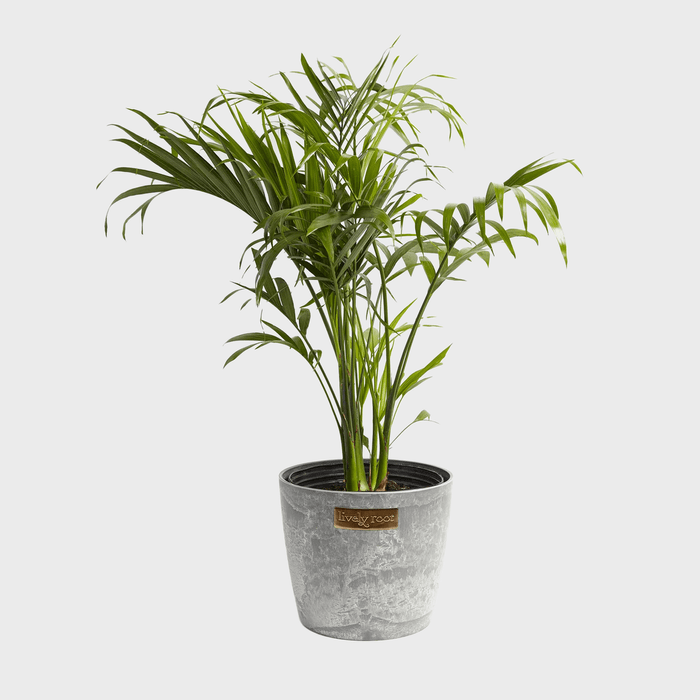
Pros:
Cons:
Size: 1 to 3 feet
Want to give a jungle feel to your living space? Consider the cat palm. With its long, textured leaves that fan out and drape, it has a decidedly island vibe and is a great plant for the living room. “The cat palm will give a lush, tropical feel to any room in your home,” says Pangborn. “This plant is easy to take care of and prefers bright indirect light.” By watering it after you let the topsoil dry, you’ll give it the best opportunity to flourish. But if you notice it (or any of your other tall indoor plants) developing ailments like powdery mildew on the leaves, you’ll want to take action.
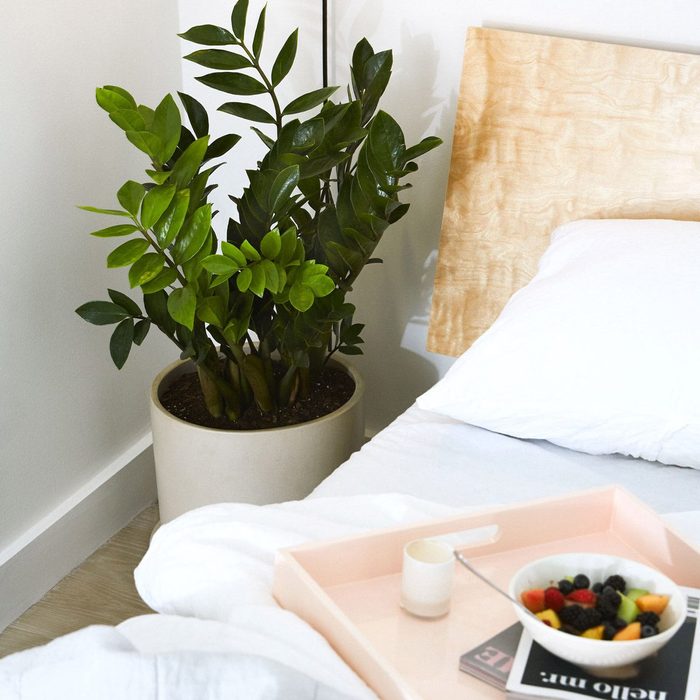
Pros:
Cons:
Size: 2 to 4 feet
Want an easy, hardy plant that can handle some neglect? The ZZ plant is for you. “ZZ is one of the most durable houseplants around, tolerates low-light and low-humidity conditions and is really forgiving if you forget to water it,” says Hancock. “It can actually drop its foliage and still survive to produce new growth after you water it.” Your two biggest tasks when it comes to ZZ plant care: Place it in a space that gets bright indirect light, and allow the soil to dry out between watering.
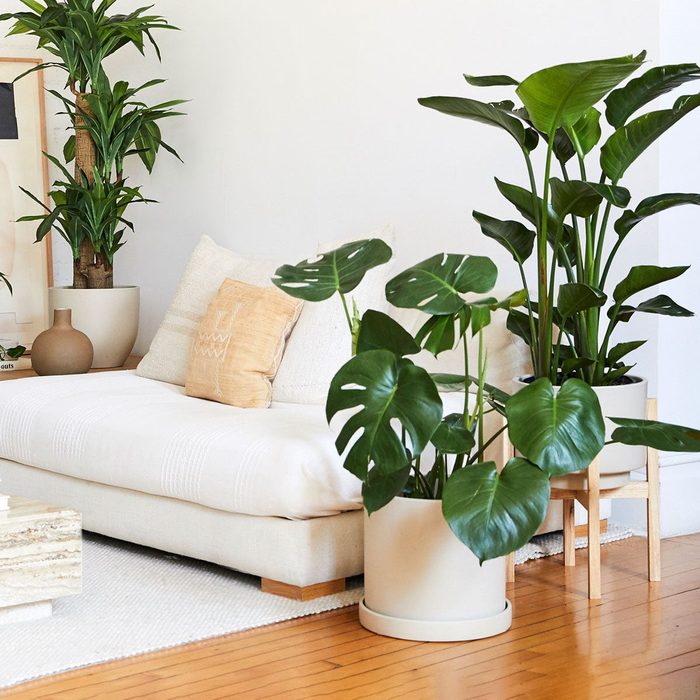
Pros:
Cons:
Size: 6 to 15 feet
With wide, oval-shaped leaves that feature natural slits and holes (known as fenestration), monsteras have earned the moniker “Swiss cheese plant.” Monstera plant care is fairly straightforward, making them an ideal option for beginners. These tall houseplants are adaptable and do well with most lighting conditions, but they really thrive when located in a spot with bright indirect light. What makes the monstera extra special, though, is the fact that it’s a type of vine. “You can train a monstera to grow how you’d like it, making a living sculpture in your home,” Hancock says.
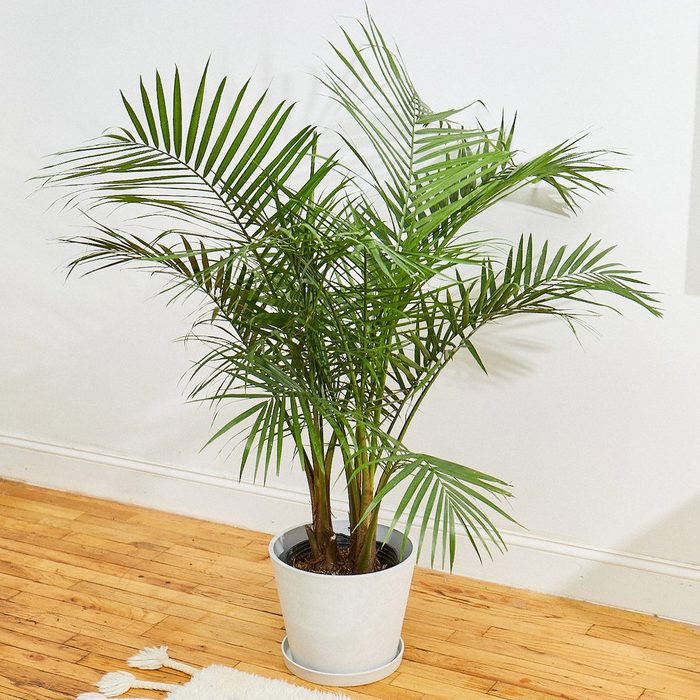
Pros:
Cons:
Size: 15 to 20 feet
For an indoor palm tree with even more height, go with the majesty palm, which features feathery bright-green leaves. “The majesty palm likes more light than the parlor palm and is bigger and lusher, so it is a great alternative if you have the conditions for it,” says Hancock. These palms prefer indirect light and do best when placed near a window that lets in plenty of sunlight. When it comes to watering, allow the soil to dry out before giving this palm another drink. If you want to add more plants to your home but are indecisive, then consider plant subscription boxes.
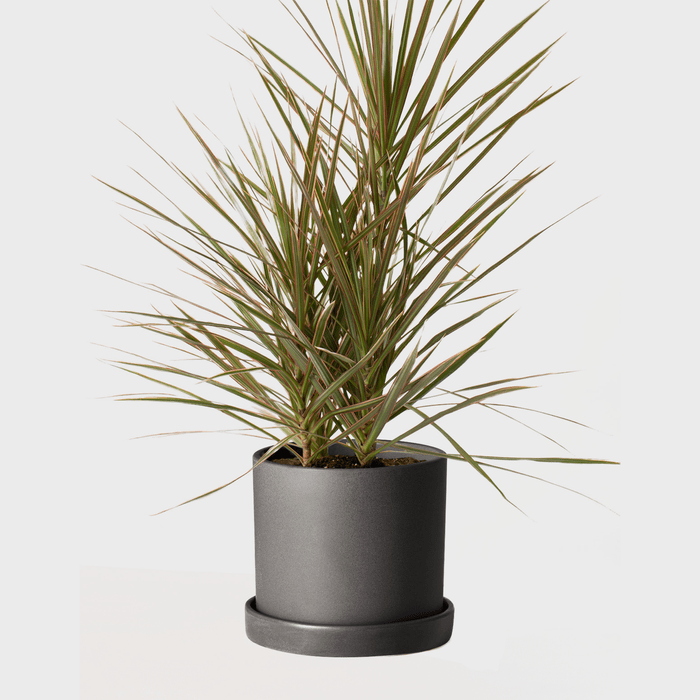
Pros:
Cons:
Size: 5 to 6 feet
With long and narrow spiked leaves, the dragon tree adds plenty of flair to a room. “The Dracaena marginata, or dragon tree, can become quite picturesque as it ages, often forming twisted stems that resemble an abstract piece of art,” says Steinkopf. Although these tall houseplants prefer bright light, she says, they can also handle lower-light situations. They’re low-maintenance plants that need to be watered either once a week or twice a month—just be sure to let the soil dry out before giving them more water. Like the idea of growing more trees indoors? Consider fruit trees that thrive inside.
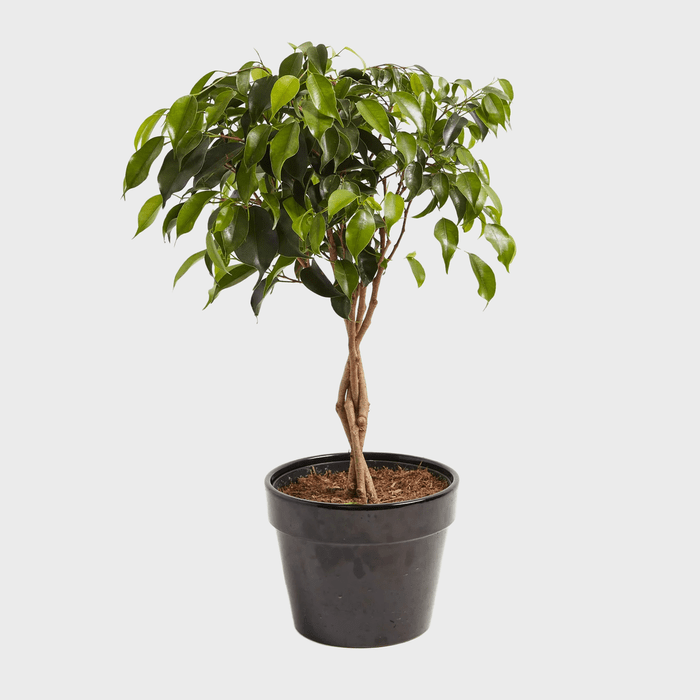
Pros:
Cons:
Size: 3 to 6 feet
A common tree that you’ve probably encountered numerous times in lobbies, malls and office buildings, the weeping fig tree is one of the most elegant tall indoor houseplants. These trees prefer bright indirect light and do best when you let the soil dry out before watering again. “In bright conditions, it’s a relatively fast grower, so it’s fun to watch its progress,” says Hancock. But Steinkopf cautions those who live in small spaces to consider the plant’s size before purchasing. “They can grow quite large, so make sure you have room for this tree to mature in your home,” she says. “It can be trimmed if it becomes too large.” Just know that this tree is sensitive to its environment, so when there’s a change, it drops its leaves.
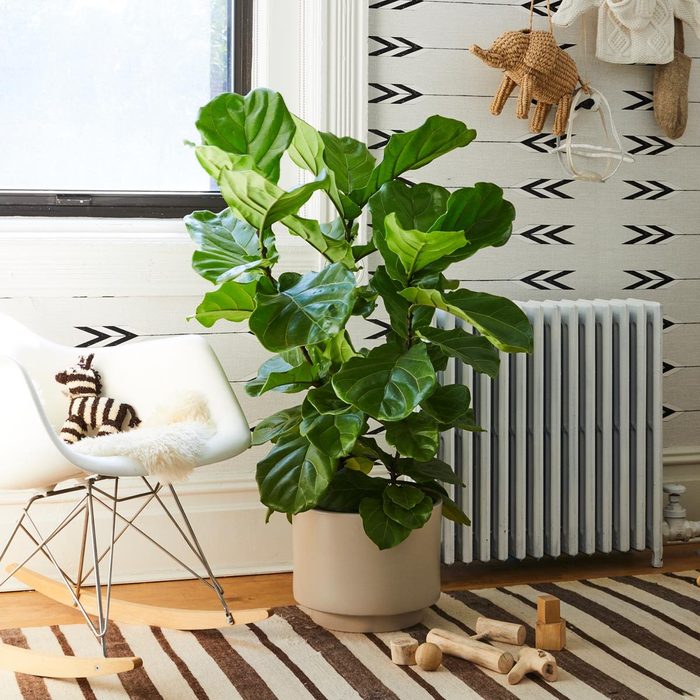
Pros:
Cons:
Size: Up to 10 feet
If you’re more experienced with owning houseplants and want to add a showstopper to your space, opt for the fiddle leaf fig. “Fiddle leaf fig trees prefer to be placed in areas with bright indirect light, preferably by an east-facing window and away from low-light spaces,” says Pangborn. If you don’t have the right lighting in your home, you’ll likely find this plant finicky. Hancock says it has an unfair reputation for fussiness because it needs the right conditions to grow well. But meet those needs and practice proper fiddle leaf fig care, and this houseplant will thrive.
Sources: